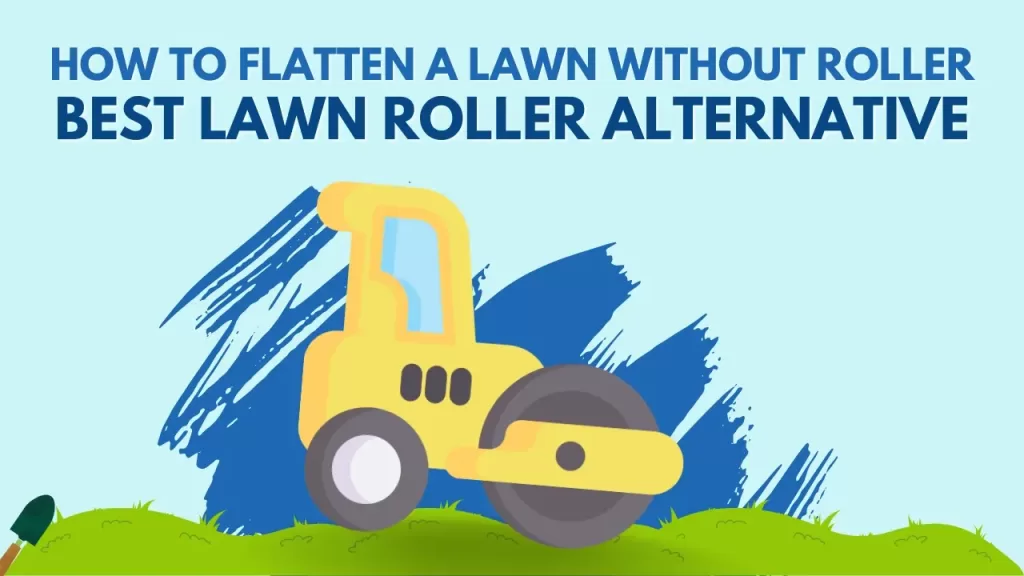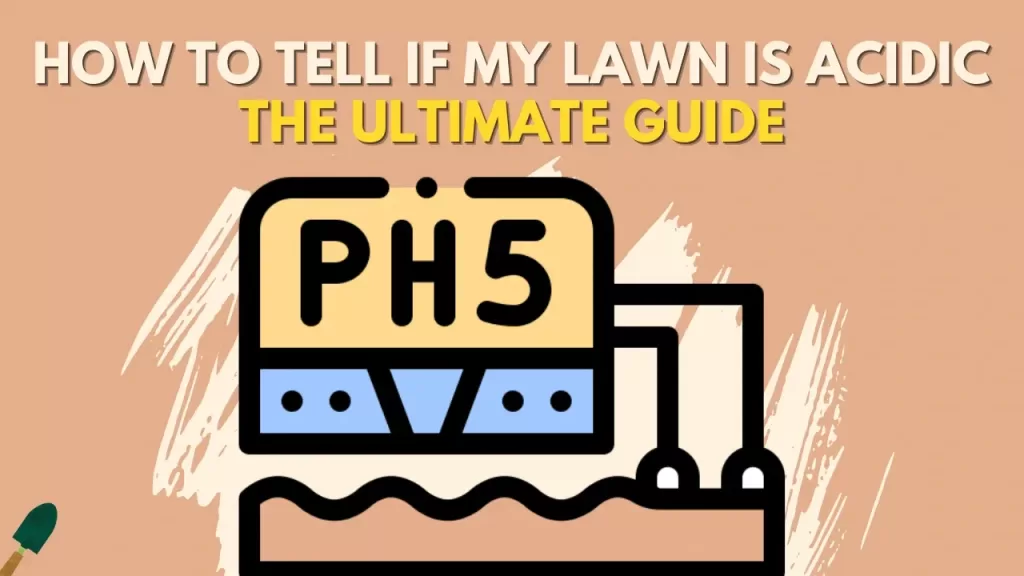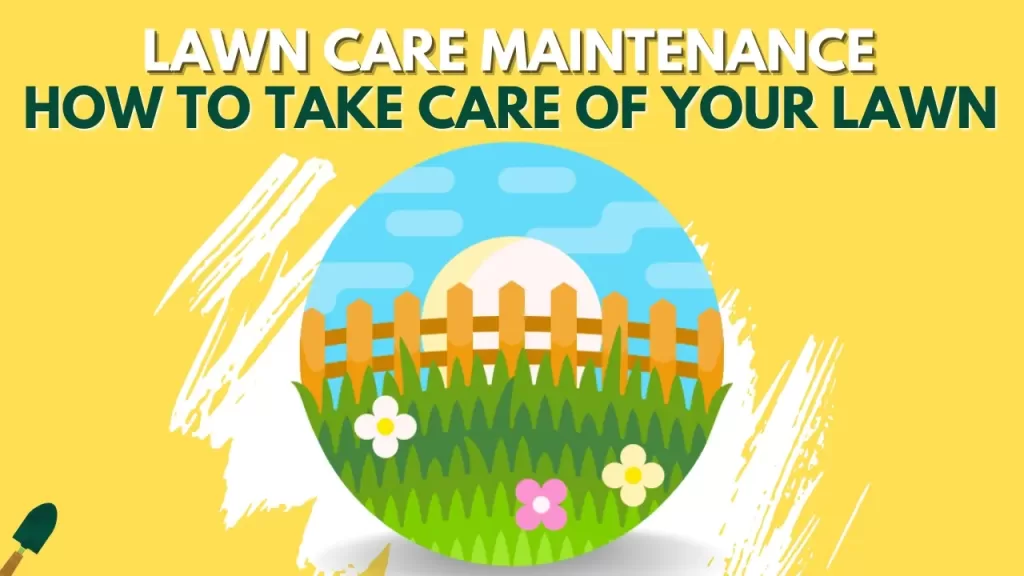Is your lawn surface irregular and bumpy? You need to flatten your lawn but you don’t have a roller. Is it still possible to surface your lawn evenly without a roller? Yes, definitely you can. Continue further to know how.
To flatten the lawn without a roller, first water the lawn to settle the soil and press it with the help of a water drum or a piece of plyboard. After this, remove soil from the bumps and fill the low spots with soil, and level it with the lawn leveller. Water again to settle the new soil into the lawn.
Before we get into the hows, let us know the reasons responsible for making your lawn uneven and bumpy.

What makes the lawn bumpy and uneven?
The lawn can become bumpy and uneven due to several reasons, it can be a pipe leaking or a buried material that can cause a low spot in the lawn. Let’s see what are all the other reasons for uneven lawns and how can you remove the cause and level the lawn. Here are some major reasons:
- Animals
- Foot traffic
- Water clogging
- Soil breakdown
- Leaked pipe
- Buried debris
Animals – animals can make your lawn uneven to find food or just to play. Animals straying in your lawn in the fall or stressful months can create some low spots. Some animals love to dig and some dig to find food in the soil. All these things make the lawn uneven and create some low spots even if you fill it afterwards.
Foot traffic – Animal or human foot traffic can also make the soil compact where the foot traffic is more than usual and can create low spots. Children playing on the lawn and digging for fun is also a cause for an uneven lawn.
Water clogging – If you have some pipe leaking above the surface of the lawn. The water can pool in one spot and make a lump where the water is sitting for a long period. It can also cause other issues in that area like diseases and fungus.
Soil breakdown – As we know soil is an organic matter and it decomposes itself. So when the soil decomposes it becomes less and makes a lump in the lawn. Every lawn has this problem in the long run.
If you have a new lawn or you just renovated your lawn, it’s more likely that you will see tiny bumps and lumps in your lawn due to the decomposition of the soil and the lawn slowly compacting.
Leaked pipe – A leaking pipe underneath the lawn can be a cause of the erosion of the soil and can make lumps in the lawn. If you are seeing some lumps where the leaks are then the cause of uneven lawn is a leaked pipe.
To make sure you don’t have a leaking pipe in your lawn, check the pressure and height of the water coming out. Remove any blockage from the outlet to make sure the water is flowing easily.
Debris buried – Sometimes a wood piece or other organic material can be buried under the lawn, which after decomposing itself causes a lump in the lawn, so check if you have something buried underneath the lawn if you are seeing a lump and remove it and fill the hole with soil.
Now you must be familiar with the reasons associated. Let’s now know the importance of flattening your lawn.
Why flatten your lawn?
Flattening a lawn and making it level is very crucial as a bumpy lawn will be very hard to mow as low spots make it very difficult for the mower to make even cuts in the grass as tires as tires go into low spots make the blade height also lower.
Walking on a bumpy lawn is also very difficult and you can easily trip over. A bumpy lawn can also make a pool of water in the low spots which can damage that spot and can be a reason for disease and fungus in the lawn.
The flat and even lawn makes it easier for mowing and watering and looks very pleasing to the eye as well.
Also, you can’t just go on to even the lawns at any irrespective intervals. Therefore you need to know the perfect timing to proceed.
What is the best time to flatten the lawn?
The best time to flatten or level a lawn is in the spring when the soil is moist to move around but the grass also has the time to grow and recover after the repair in the summer. If you repair your lawn in the summer or the fall the grass will have very little time to recover and can damage your lawn.
Until now you are aware of the reasons and specifics of flattening the lawn, let’s dig in now on the process of flattening.
How to flatten the lawn without a roller?
If you are going to level or flatten your lawn, you need some equipment and material for it like lawn leveler, filler soil, rake and to press the bumps a roller, but worry not if you don’t have the roller as in this method the work for the roller is very little and you can use other alternatives to the roller like a piece of plywood or a drum filled with water.
Let’s see step by step on how you level your lawn manually without a roller:
- Fertilize the lawn a week before
- Water the lawn
- Press any mounds
- Choose filler type
- Remove soil from bumps
- Throw the filler in low spots
- Water and check
- Alternative to lawn roller
Fertilize the lawn a week before
Before you even start the process of leveling or flattening the lawn. The first thing you need to do is to fertilize your lawn before a week. This will make sure that the fertilizer has broken down into the soil and will give a boost to the grass to grow after the repairs.
Water the lawn
The first thing you need to do to level the lawn is to water it deeply to make sure all the soil is settled down. Watering will also help in working on the lawn.
Press any mounds
After watering press the soil lightly to remove any gaps underneath the soil like mounds which can create problems afterward. You can use a wooden piece to press the soil. Put some weight over the wood and move it around the lawn to press the soil.
If you don’t have anything then you need to worry as this is not very important if you don’t have any big bumps. You can just walk around on the lawn one or two times to make the soil compact.
Choose filler type
You need to decide what type of soil you are going to spread in the lawn if the spots as only filling compost or soil to the lawn is not enough as the soil cannot maintain its shape for a long period and that’s the reason the lawn have lumps and bumps.
Use a mixture of 50 percent sand and 50 percent soil or 70-30 so that the sand gives your lawn an even shape when the soil breaks down into the lawn.
Remove soil from the bumps
If you have big bumps in the lawn, then slice the grass and pull up the sod and remove a little bit of soil to remove the bump. And put back the sod in place again. You can use this extra soil to fill up the low spot.
Throw the filler in low spots
After that identify all the low spots and spread the filler onto them and start spreading it with the help of a lawn leveler. Move the lawn leveler back and forth 4-5 times to make the spot even and level to the whole lawn.
Water and check
After spreading the soil on the uneven spots and leveling the lawn, water the spots or the whole lawn to make the soil settle down in the spots. After watering the lawn check for any low spots left in the lawn, and fill them if there is a need.
If you found a spot that you have filled you need to come back next season to level it out as leveling out the lawn is a continuous process and it takes several seasons before the lawn is even and perfectly level.
Lawn Roller Alternative
These are some of the best alternatives to lawn roller. If you don’t have a lawn roller than you should try one of these:
Digging – If you don’t have a roller to flatten a bump in the lawn what you can do is slice the sod in the middle of the bump or remove some soil from underneath it to level it with the lawn.
Drum – Water drum is also a really good alternative to lawn roller. Just fill it up to 1/3rd and roll into the lawn to flatten the bumps and lumps of the lawn.
Plyboard – A plyboard is the cheapest option available to flatten up the lawn. Just take a big piece of plyboard and tie it with a rope. Put some weights or rocks over the board to put pressure in the soil and then drag the board around the lawn to make it even and level.
Power raker – Power raker is also a very good tool to reduce bumps from the lawn but it is expensive to buy or rent and some people don’t know how to use a powered raker properly and can damage their lawn in the process. If you know how to use a power rake then it can be a good tool to level up the lawn.
Is flattening the lawn good or bad?
Flattening the lawn is very essential and good for the lawn as well as for you as it makes it easier to work in the lawn like mowing and watering. Walking on a bumpy lawn can also be dangerous for kids playing around as bumps can make them trip. Flat and even lawn is good for everybody and also looking at an even lawn is pleasing to the eyes.
How do you make a homemade DIY lawn roller?
The best and easiest way to make a homemade lawn roller is to make it with a 55-gallon water drum which is easily available at home. Using a water drum is also very convenient as you can increase or decrease its weight according to the need by adding or removing the water.
This type of lawn roller is very useful after seeding the lawn to press the seed under the soil or after a small repair job.
Step by step guide to make a concrete DIY lawn roller at home:
Mold or casing – the first thing to do to make a DIY lawn roller at home is to create a casing for the roller to fill the concrete, you can use a PVC pipe or a metal pipe of 12 inches in diameter which can be about 2 feet long. If you want a bigger and heavy roller, you can use an oil drum to make the casing.
Concrete mixture – after making the case use a mixture of cement, sand, and gravel in the ratio of 1:2:2 and fill it in the casing.
Support – to make a handle to use the roller, take a PVC or steel pipe of 2 inches in diameter at least six inches longer than the roller casing and put it in the middle of the concrete and when the concrete is dried and hard, remove the casing and put a metal rod through the small PVC pipe in the middle.
Making a handle – connect a rod to both sides of the metal rod and then connect a rod to the opposite side of these two rods with the help of welding or other methods to make a handle for the roller. Your lawn roller now is ready for use.
Tips to flatten or to level your lawn
- Don’t use wet soil
- Use sand and soil both
- Use fine sand
- Mow the grass low
- Proper timing
Don’t use wet soil – to fill the low spots, don’t use wet soil or sand as spreading wet soil or sand is very difficult and it has lumps that are difficult to break down. Always use dry sand or soil or compost to level the lawn as it will be very easy to work with and can level out very easily in the lawn.
Using soil and sand – don’t use only soil for leveling the lawn as the soil is an organic matter which will eventually break down into the lawn making low spots again so use a mixture of sand and soil so that the sand can level out the lawn even when the soil has broken down. Sand remains as it is as it doesn’t have organic matter in it.
Use fine sand – using all-purpose sand to fill or level the lawn is not a good idea as it contains big size rocks which remain on the surface of the lawn even after 3-4 years. Use fine sand which can mix up with the soil making your lawn level and smooth.
Mow the grass low – when you are leveling the lawn, mow the grass low to the ground to make sure you can work very easily on the lawn. Spreading the soil with big grass is very difficult and tiresome. If the grass is short, you can easily rake the soil and spread it with the help of a lawn leveler.
Timing is crucial – timing for the repair or the leveling of the lawn is crucial, as you need to give the grass some good time after the leveling to grow back and make the lawn healthy and thick. Usually, the best time to repair your lawn is in the spring when the soil is moist and after that, the grass has a long summer and fall to recover and grow itself.
How To Level A Lawn By Hand?
If you don’t have a lawn roller or any other equipment to level the lawn, you can use a rake or simple tool available in every house like a spade. Find the bumps and uneven patches on the lawn and start slowly by removing soil form the bumps and putting it in the low spots to make it even. After you have removed all the bumps and fill all the lows, you can make it even by walking over to put pressure on the soil. This will make your lawn level without any tool.
I hope until now this article provided you precise information about making your lawn even. So don’t worry next time when you don’t have a roller. Just pick up the points and follow them.




